You are here
Adventures in Uzbekistan. 2019.

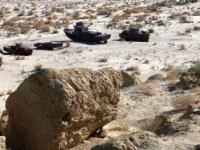
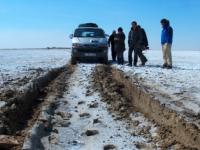
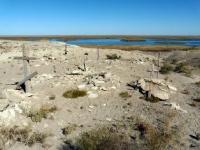
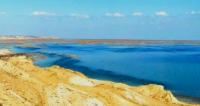
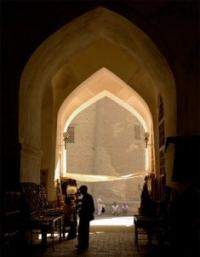
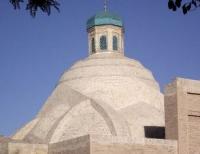
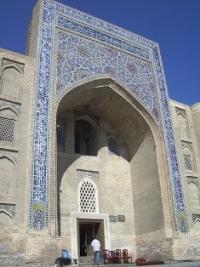
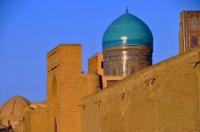
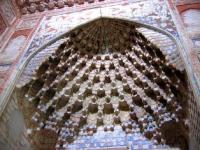
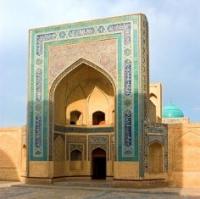
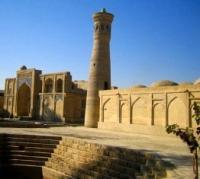
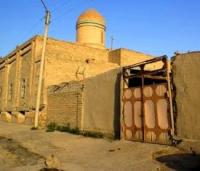
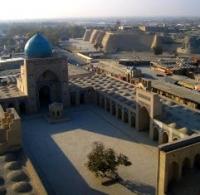
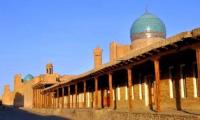
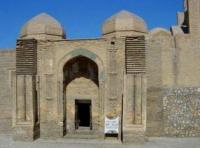
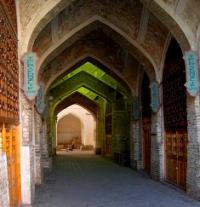
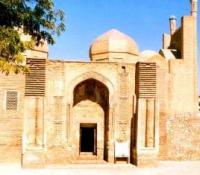
Tours to Uzbekistan.
«Memory is the treasure house of the mind wherein the monuments thereof are kept and preserved»
Thomas Fuller.
Short description of route of tour from Uzbekistan to Tajikistan:
Tashkent - Khiva - settlement of Madjrum - lake Aydarkul - Nurata town - petroglyphs Sarmysh Say - Samarkand town - town of Pendjikent - Marguzor lakes - town Urgut – town Shakhrisabz - kishlak Lyangar - settlement of Dekhkanabad - settlement of Dzharkurgan - town Termez - Bukhara town – town Khiva - settlement of Muynak - Aral Sea – town Nukus - Tashkent
Distance of the route: 3102 km.
Season: from April 15 to September 30.
The best time for an excursion: April, May, June, September.
Tour duration: 22 days, 21 nights.
The maximum quantity in group: 10 people.
The detailed program of tour day after day on of province in Uzbekistan:.
Tours to Termez.
Day 1. Tashkent.
Arrival in Tashkent, meeting at the airport, transfer to hotel, accommodation. Free time, overnight.
Day 2. Tashkent.
Breakfast. Visit of the Old city, is the religious center of Tashkent here - the Hast-Imam complex. Among unique exhibits of old Tashkent, the well-known Koran of the Caliph Osman (VIIth century) an initial source of the sacred book of Islam is stored here. Visit in the architectural and cultural Hast-Imam complex, madrasah Barack khan, Tillya-Sheikh mosque, the mausoleum Abu Bakr Kaffal Shashi, Islamic institute of a name of the Imam of al Bukhari.
Transfer the oldest market of the city Chorsu, walk on a market. Lunch. After visit and sightseeing of the Old city, a trip by the Tashkent subway to the central part of Tashkent. In 1973 construction of the Tashkent subway began. Since 1977 the subway - only, at that time, in Central Asia works in the capital, Today the subway has three lines - Chilanzar, Uzbekistan and Yunusabad, 29 stations. Total length of lines makes 35 km.
Visit of the areas of Amir Timur and Liberty, museum of applied art. Walk on the areas. In the museum the unique exhibits telling about history of decorative art of Uzbekistan are presented. Here exhibits of work of masters of woodcarving and stamping, jewelers and masters of gold sewing. After the excursion transfer for dinner. Return to hotel and overnight.
Day 3. Tashkent.
Breakfast. Visit of the park of Alisher Navoi and madrasah Abdul Kassim where settles down the center of handicraftsmen, here it is possible to buy souvenirs with woodcarving, a tiny list on caskets and on silk paper. Visit of madrasah Kukeldash old madrasah in Tashkent, visit of the mosque of Zhuma, the third largest Friday mosque in Uzbekistan. Visit of a monument "Courage", National cohesion Square of the people, the Broadway - the avenue of artists.
Visit of a monument Amir to Timur in the city park of Amir Timur, a memorial of "Memory of the victims of repressions". Visit of the Center of pilaf, in the Center of pilaf five masters, and also several assistants who cook pilaf work. Pilaf is cooked by 11 o'clock. In Uzbekistan pilaf can be eaten during a lunch. Pilaf begins to be cooked with morning in the yard of the Center of pilaf in five enormous pig-iron cauldrons coppers (coppers contain 50 kilograms of rice everyone) on firewood. A sightseeing tour across Tashkent. Return to hotel, dinner and overnight.
Day 4. Tashkent - settlement of Madjrum (304 km).
Breakfast. Transfer: Tashkent - Jizzakh (184 km). Our way from Tashkent goes to the southwest to the administrative center of the Jizzakh region - to the city of Jizzakh. The Jizzakh region is in the central part of Uzbekistan between the Syr Darya Rivers and Zeravshan. We pass the town of Syr Darya which is on the middle of a way. In the neighborhood of the city of Jizzakh in roadside cafe we will have a bite fresh samosa, a lunch.
Further transfer: Dzhiizak - settlement of Madjrum (120 km). We pass the village of Yangikishlak, Forish. Our further way goes to the northwest, on old Farish Road, along the ridge Nuratau which will be located to the left of us. Arrival in the settlement of Madjrum, accommodation in the guest house. Walk in vicinities. Dinner and overnight.
Day 5. Settlement of Madjrum - lake Aydarkul – yurt camp “Safari camp” (122 km).
Breakfast. Walk to a tree to a juniper (a biota east) (1 km). Height of a tree is more than 20 meters, a grasp 24 meters, a grasp of the central branch of 12 meters. The age of a tree is definitely not established, approximately 1500, is esteemed by locals. According to local legends the tree is planted by Alexander the Great soldiers. The tree is a unique nature sanctuary. In close proximity to a juniper there are ruins of an old kishlak of a hill Madjrum, walk in vicinities. Return to the settlement of Madjum, walk on the settlement. A lunch in the guest house.
Transfer: settlement of Madjrum – yurt camp “Safari camp” (121 km). We leave the hospitable settlement of Madjrum and ours goes to the Lake Aydarkul which is from the ridge Nuratau in the north. We pass the settlement of Temirkovuk, then after the settlement of Kyzylcha we pass on the road, 20 more kilometers and Nuratau mountains come to an end, before us on the North the desert Kuzylkum begins. We pass the small settlement of Koshkuduk and on the right the view of the lake Aydarkul opens.
Arrival in the yurt camp “Safari camp”, accommodation in yurts. Till a dinner walk on camels in the neighborhood of the yurts camp. A trip by cars to the Lake Aydarkul, walk in vicinities. In a southeast part of the Kyzyl Kum Desert the unique natural desert saxaul woods well remained. Dinner and overnight.
Day 6. Yurt camp “Safari camp” - Nurata town - petroglyphs Sarmysh Say - Samarkand (327 km).
Breakfast. After breakfast transfer to the city of Nurata (65 km). After the Lake Aydarkul, our way goes to the South, we pass the western part of the ridge Nuratau. Arrival in the town of Nurata. In the town of Nurata visit of a complex Chashma (the mosque Chil Ustun Chashma), tomb of the saint Nur of at, a sacred source Chashma) and ruins of fortress of Nur. On a legend in the neighborhood of Nurata the meteorite fell and now over Nurata light is visible. Nurata is considered the sacred and popular place of a pilgrimage.
Here the cult complex with two mosques X - XVI of century of century Chil Ustun with 40 columns and a dome about 16 meters in the diameter and Panch Vakta, burial of the Saint Nur Ota (Sheikh Abul Hassan Nury) was constructed. The pool in which swim a set "sacred" a marinka - fishes of family trout. The pool is filled from an underground source (chashma) which is "sacred" too. A lunch in local cafe.
Further transfer: town of Nurata - valley Sarmysh Say (69 km). Between the cities of Navoi and Nurata near the pass Cara Karga, on the southeast suburb of the desert Kyzyl Kum rises a mountain range of Karatau, one of spurs of Nuratau mountains.
The first images of petroglyphs appeared at the time of the Neolithic here, the last are dated the Middle Ages. The petroglyphic gallery occupies the territory almost in two kilometers and includes about four thousand rock paintings - petroglyphs (from the Greek petros - a stone and glyphe - a carving, cutting), each of which is absolutely unique. According to scientists, people came to the gorge at a turn of the Neolithic and an era of bronze. Water, a set of caves for a wintering and abundance of wild animals.
The most ancient drawings are dated the IXth century B.C., are the most primitive and represent ancient hunters in an environment of potential production or protect from attack of predators. Later there are drawings of ritual and household scenes, pets are represented: cows, horses, camels, sheep, dogs. Walks in vicinities. Lunch picnic.
Further transfer: Sarmysh Say valley - Samarkand (193 km). After the valley Sarmysh Say our way of goes on the South, in the neighborhood of the settlement of the Karmana we turn on the East, we pass the big settlement of Kattagurgan and we arrive to Samarkand. Transfer to hotel, accommodation, dinner and overnight.
Day 7. Samarkand.
Breakfast. An excursion across Samarkand. Visit: Ulugbek observatory, Doniyor Paygambar (prophet Daniil) mausoleum (XIV, the beginning of the XXth century), the museum of history of the town at the ancient settlement Afrosiab (VIIIth century BC), the mosque Hazrati Hyzr (XIXth century), the mausoleum Shakhi-Zinda complex (the XI - XV century). A lunch and a dinner in local cafes or restaurants. Overnight.
Day 8. Samarkand.
Breakfast. Visit: the mausoleum Gur-Emir (the XVth century), ensemble of monuments on the square Registan from Ulugbek madrasah (the XVth century), Cher Dor madrasah and Tillya-Kari (the XVIIth century), the mausoleum Rukhabad ("Monastery of Spirit") (the XIV - XV century) - the sheikh's tomb Burkhan ad-Din Sagardzhi (the head of Muslims in Beijing) buried according to its will in Samarkand. Visit of the mosque by Bibi-Hanum (XVth century, Siab market. A lunch and a dinner in local cafes or restaurants. Overnight.
Day 9. Samarkand - Penjikent (57 km).
Breakfast. Transfer: Samarkand - settlement of Faizabad – “Dzhartepa” check point (39 km). Going through formalities of the customs and border service of Uzbekistan. Transfer to the “Sarazm” check point, going through formalities of the customs and border service of Tajikistan.
Transfer: “Sarazm” check point - ancient settlement Sarazm (6 km). Well remained palace and cult constructions, public and residential buildings are of great historical and cultural value. On the place of excavation metal and stone products, and also the numerous jewelry made of gemstones and the processed sea shells were found. The settlement is located within the Bactrian and Margiana archaeological complex. An excursion in the neighborhood of the ancient settlement Sarazm.
Further transfer: ancient settlement Sarazm - town of Penjikent (12 km). Arrival in Penjikent, transfer to the guest house, accommodation, lunch. After a lunch a sightseeing tour across Penjikent, visit of the historical museum of Rudaki, visit of the archaeological museum of the town, visit of the ancient settlement Penjikent. Return to the guest house, dinner and overnight.
Day 10. Penjikent - Marguzor lakes- Penjikent 70 + 70 km = (140 km).
Breakfast. A trip on lakes Marguzor. Lakes Marguzor (in translation from the Tadjik seven beauties). Cascade Marguzor of lakes is in a valley of the river Shing which during old times served as a place of the brisk trade. The gorge of the river Shing was convenient by the between Central Asia and India. The first lake in cascade Marguzor of lakes - the most beautiful lake Mizhgon (in translation with Tadjik - The Eyelash).
Behind lake Mizhgon, the lake the Soya (in translation with Tadjik - The Shadow) and lake Hushyor (in translation with Tadjik - Vigilance) at height of 1700 meters above sea level follows. Further on a streamer of road, the lake Nofin (in with Tadjik - The Umbilical cord) is located. Behind lake Nofin the settlement Padrud, further lake Hurdak (in translation with Tadjik - Kidling) is located. Water in him cold, blue and transparent.
On a way to lake Hurdak there are gardens from apricot and Apple trees. The road to lake Marguzor (in translation with Tadjik - The Abundance of greens) goes through clover a field which is surrounded with thrickets of a dog rose and a barberry. Further lake – Khazor Chashma (in translation with Tadjik - One thousand sources), this seventh lake of the cascade of known lakes and the most beautiful at height of 2400 meters above sea level, length 4,5 meters and depth of 85 meters, water here very transparent and cold.
Two rivers run into it, from the south the river Hisor - from the east river Darahti Surh (in translation with Tadjik - Mahogany). Picnic in vicinities of lakes Marguzor. Returning in Pendjikent, a dinner and overnight.
Day 11. Penjikent - town of Urgut - Shakhrisabz (128 km).
Breakfast. Transfer: Penjikent – “Sarazm” check point (19 km). Passing of formalities of the customs and border service of Tajikistan. Moving on the Dzhartepa check point, going through of formalities of the customs and border service of Uzbekistan.
Transfer: “Dzhartepa” check point - settlement of Ispanza - town of Urgut (27 km). In the town of Urgut, visit of an ancient plane-tree grove in which is 121 plane trees, to the most young - 450 years, to the most ancient plane tree - more 1300. Trunks of trees intertwined, and roots grow in the earth. Locals tell that in the 1970th years these plane trees wanted to cut, but the tractor could not get moving forward them - so deeply they took root.
Visit of the well-known Sunday market - with sale of old and modern products of national craft, here (syuzena) can get carpets, a manual embroidery, leather footwear, jewelry, art metal wares, ceramic ware, wooden chests. A row located smithies, tin workshops, benches of national clothes.
Further transfer: town of Urgut - Pass Takhtakaracha (1788 meters above sea level) (47 km). A stop on the pass Takhtakaracha walk among dealers, here locals sell fruit, nuts, milk, kefir, Curt - local cheese from cottage cheese.
Further transfer: Pass Takhtakaracha – town Shakhrisabz (35 km). We pass the big settlement of Kitob and soon in Shakhrisabz. Transfer to hotel, accommodation. Evening walk to a monument Amir to Timur in the Central square. A dinner at restaurant and overnight.
Day 12. Shakhrisabz - kishlak Lyangar - settlement of Dekhkanabad (140 km).
Breakfast. At 8:00 an excursion across Shakhrisabz - Amir Temur homeland. Visit of historical monuments of the ancient town – Ak saray (the XIV-XV century) the grandiose country palace Amir Temur, Dorut Saodat complex ("Department Place") (the XIV - XVI century), here is a crypt of sons of Temur - Jahangir and Umar, Dorut Tilovat complex ("The place of reflection, contemplation") (XIVth century) - the mausoleum of the spiritual mentor Temur - the sheikh Shamsiddin Kulol where also Timur father - Amir Taragay, the mausoleum Gumbazi Saiydon (XVth century) - the mausoleum (makbarat) of Ulugbek descendants, the cathedral Mosque Cook-Gumbaz is buried (XVth century). Lunch at local restaurant.
Transfer: Shakhrisabz - settlement of Kyzyltepa - kishlak Lyangar (65 km). The ancient and exotic mountain kishlak Lyangar is near the mausoleum Mahomed Sadyk of the sheikh - the wise man living at the end of XV beginning of the XVIth century in these severe about beautiful places. Up to now several houses since those times constructed of clay remained. From the mausoleum Lyangar of at the kishlak is well visible from above, it is possible to see clay roofs of houses. Walk on a kishlak, visit of the mausoleum Lyangar of at a, the local mosque. The end of an excursion in a kishlak Lyangar.
Transfer: Lyangar kishlak - Kan kishlak (19 km). Locals in the neighborhood of kishlak Kan extract in the primitive ways rock salt. Visit of places of extraction of rock salt, walk in the neighborhood of a kishlak Kan. The end of an excursion in kishlak Kan.
Transfer: kishlak Kan - kishlak Lyangar - Dekhkanabad (131 km). Arrival in the settlement of Dekhkanabad, transfer to hotel, accommodation, dinner and overnight.
Day 13. Settlement of Dekhkanabad - Dzharkurgan - town of Termez - (269 km).
Breakfast. Transfer: Dekhkanabad - settlement of Derbent - settlement of Boysun (85 km). A stop in the neighborhood of the settlement of Boysun, the neighborhood of the settlement very picturesque, from height opens picturesque landscapes of surrounding mountains.
Further transfer: settlement of Boysun - settlement of Dashtigaz - settlement of Tangimush - settlement of Sarik - settlement of Dzharkurgan (102 km). Visit of a monument of medieval architecture - the Dzharkurgan minaret (XIth century).
Transfer: Dzharkurgan – Kympyr tepa the ancient settlement (37 km). A lunch in way. Visit of antique fortress of Kampyr tepa (I - III century). The massif of the single Kushan housing estate opened here is dated the periods of government of tsars from Sotera Megasa to Kanishki I (the second half of the Ist century AD - the first half of the IInd century AD). The complex of material culture of these quarters is reference for the period of formation and blossoming of the Kushansky empire.
Further transfer: Kympyrtepa the ancient settlement - Fayaz tepa (28 km). Fayaz tepa is the Buddhist temple monastic complex opened by the Tashkent archeologist L. I. Albaum in 1963. Transfer: Fayaz tepa - Buddhist complex the Kara tepa (4 km). Kara tepa complex ("Black hills") was the center of Buddhist culture in the II - IV centuries of our era. Constructed on three sandy hills, Kara tepa complex is located in the northwest of the ancient settlement Old Termez and has with an area about seven hectares.
Further transfer: Buddhist complex Kara tepa - complex Hakim Termezi (5 km). This architectural monument is the mausoleum of "the wise man from Termez" – Hakim Termezi whose full name - Abu Abdullokh ibn Hassan ibn Bachir. It was the great theorist of Islamic Sufism, the outstanding scientist and the founder of an award of dervishes. End of excursions.
Transfer: complex Hakim Termezi - town of Termez (11 km). Arrival in Termez, accommodation in hotel, a dinner and overnight.
Day 14. Termez - (22 km).
Breakfast. An excursion across Termez. Visit of the archaeological museum in which ancient history of this edge is presented. Visit of convent Kirk-Kyz (VI - XI century) (8 km). Fortress Kirk-Kyz was is constructed in the IX - X century AD. Is in the Termez district, in Namun kishlak. This building - the residence of the Samanid emir who in summertime liked to stay far from noise and vanity of the big city and for this purpose constructed to himself this construction.
Further transfer: convent Kirk-Kyz (VI - XI century of century) - Kokildor of a hanaka (2 km). Hanaka (sacred monastery) constructed in the XIth century it one in Central Asia which differs in the frontal composition shaking imagination decorated by numerous bright patterns. Kokildor of a hanaka says grandeur of architecture of a hanakaa that it was restored in the XVth century - during an era Temurids.
Transfer: Kokildor of a hanaka - mausoleum Sultan Saodat (the XIII - XIV century) (3 km). "Sultan Saodat" in translation from Arab means "dominion of seyids". Seyids are considered as lineal descendants of the prophet Muhammad. Hassan is scarlet-emir who was the representative of the fifth imam Hussein - the grandson Muhammad was a founder of their sort. In the main tomb Sultan Saodat buried also remains of many famous members of seyid who left the homeland in due time.
End of an excursion, return to Termez (9 km). Free time, dinner and overnight.
Day 15. Termez - Bukhara (440 km).
Breakfast. Transfer: Termez - settlement of Sherabad - settlement of Chilanzar - settlement of Sayrob (108 km). In the settlement of Sayrob we will visit ancient plane trees to which more 1000 in which hollow locals built small the museum. Sayrob is also famous for the natural spring of water. Near plane trees there is a spring according to locals possessing medical to properties. Walk on a market and the neighborhood of the settlement.
Further transfer: settlement of Sayrob - town of Karshi (164 km). A lunch in cafe in the neighborhood of town of Karshi.
Transfer: Karshi - settlement of Kasan - mausoleum Muborak (69 km). Visit of the mausoleum Muborak, walk in vicinities. Further transfer: mausoleum Muborak - settlement Karaul Bazar (49 km). Visit of a sardoba (storage for water) in the neighborhood of the settlement Karaul Bazar.
Transfer: Karaul Bazar - town of Bukhara (50 km). Arrival in Bukhara, transfer to hotel, accommodation, dinner and overnight.
Day 16. Bukhara.
Breakfast. Visit of architectural monuments of Bukhara: an architectural complex of Lyabi Khouse, the mausoleum and madrasah Nodir Divan Begi (XVIth century), madrasah Kukeldash (XVth century), a monument Khodga Nasreddin, Tim Abdullakhana (XVIth century), the covered market which was used for trade of expensive silk fabrics.
Visit of the mosque of Magokki Attori (XIIth century), this mosque it is constructed on the place of the pagan temple of fire worshippers, it is one of 3 monuments in Bukhara which escaped after Genghis Khan invasion.
Visit of madrasah of Ulugbek (XVth century), this madrasah is constructed by Tamerlan grandson, on an entrance to madrasah there is an inscription the Arab ligature belonging to the prophet Muhammad: "Aspiration to knowledge - a duty of each Muslim and Muslim". Visit of madrasah of Abdullazizkhan (XVIIth century), caravanserais of Bukhara, mosque Kalon (XVIth century).
Visit of the operating madrasah the Mir-i-Arab (XVIth century), in madrasah the head of the Russian Muslims Ravil Gaynuddin and the former president of Chechnya Ahmad Kadyrov studied. Visit of a minaret Kalyan - a symbol of Bukhara (death tower), on one of legends, dumped from a minaret adulteresses and freethinking bukharets.
Visit of trade domes (XVIth century): Toki Saraffon, Toki Telpak Furushon, Toki Zargaron where local handicraftsmen (jewelers, ceramists, potters, handicraftsmen) sell the products. A lunch in local cafe. After a lunch continuation of an excursion, visit of an architectural complex Registan - fortresses of the Arc - a grandiose citadel, the habitat of governors of Bukhara, a stronghold of the power and power (the Ist century BC - XIXth century), Bolo-Khouse mosques (XVIIIth century), Shukhov towers, the square Registan.
Visit of the most ancient monument in Uzbekistan - Ismail Samani's mausoleum (the IX - X century of century) - tombs of a dynasty of governors of Bukhara, the mausoleum Chashma-Ayub (XIVth century), mosque Chor Minor.
At will bathing in the Central Asian bath of the XVIth century "Homomi Bozori Kord". A lunch and a dinner at local restaurants and overnight.
Day 17. Bukhara (41 km).
Breakfast. Trip to the country visit of a majestic necropolis of Bakhauddin Nakshbandi (12 km) - the place of burial of the Sufi mystic of the award "Nakshbandiya" Saint Bakhauddin Nakshbandi esteemed in all Muslim world. Visit of Sitora-Mocha Khosa (16 km) - the summer palace of the last emir of Bukhara (XIXth century).
Transfer and visit to a necropolis Chor-Bakr (X - XVI century) (13 km) which is in the settlement of Sumitan in the West in the suburb of Bukhara - the "city of shadows" serving as the family residence to spiritual leaders of the award "Nakshbandiya". A lunch in teahouse “Chor-Bakr”.
Return to Bukhara. Visit of the mausoleum Chashma Ayoub (XII - XVI century), in the mausoleum is a source of holy water and the small museum. Visit of the most ancient monument in Uzbekistan - the mausoleum Samanid’s (Xth century), a family tomb of a dynasty Samanid’s. The monument is recognized as a pearl of architecture of Central Asia.
Visit of the house of the rich Bukhara merchant belonging to the first President of the Bukhara People's Republic - to Fayzullo Hodzhayev. Demonstration old times of the Bukhara clothes. A dinner at local restaurant and overnight.
Day 18. Bukhara - Khiva (454 km).
Breakfast. Transfer: Bukhara - town of Gazli - Kyzyl Kum Desert - settlement of Uch-Uchak (269 km). Transfer to Khiva through the Kyzyl Kum Desert. A stop at the settlement of Uch-Uchak, a picnic lunch-boxes.
Further transfer: settlement of Uch-Uchak - town of Tortkul - town of Beruni - town of Urgench - town of Khiva (185 km). Arrival in Khiva, transfer to hotel, accommodation, dinner. Evening walk on ancient monuments. Overnight.
Day 19. Khiva.
Breakfast. An excursion across Khiva - "The museum under the open sky". Visit: fortress Ichan-Kala (VIII - XIX century), Pakhlavon Mahmoud mausoleum (XVIII - XIX century) - the main cult center Ichan-Kala, is constructed in honor of the patron saint of Khiva, the poet, the philosopher, the doctor and the invincible fighter Pakhlavan Mahmoud, a minaret and the mosque Khodja Islam (the beginning of the XXth century) - the highest minaret (57 meters with the base) and the smallest madrasah in Khiva. A lunch at local restaurant.
Continuation of an excursion across Khiva, visit of a complex of Allakulikhan, madrasah, Tim (the covered market) and a caravanserai (XVIIIth century), madrasah Hurdzhum (XVIIth century), madrasah Abdullah of Khan (XIXth century), the palace Tash-Khauli (19th century) - the palace of the khan with throne and judicial halls and a harem, Zhuma the mosque and a minaret (the XII - XX century) - a roof of the mosque support 212 carved columns, thanks to unique construction this most cool place in Khiva, with magnificent acoustics, minaret Height - 32, 5 meters.
Visit of the mausoleum Said Alauddina (XIVth century), madrasah Mahomed Amin of Khan (XIXth century) - the biggest medieval madrasah of Khiva, a minaret Kalta Minor (XIXth century) - the highest minaret in the Muslim world which height had to reach 70 meters remained not complete at the height of 26 meters, a citadel of the Kunya Ark (XIXth century) - internal fortress with office buildings, a powder workshop, the courthouse and the mosque, madrasah of Shirgazi of the khan (XVIIIth century). Dinner and overnight.
Day 20. Khiva - town of Nukus - settlement of Muynak (374 km).
Breakfast. Transfer: Khiva - settlement of Mangit - settlement of Kipchak - town of Nukus (167 km). Arrival in Nukus. Visit of the museum of arts of I. V. Savitsky. In the museum there are fine masterpieces of painting of artists Raphael Matevosyan and Faim Madgazin devoted to the Aral Sea and Southern Aral. A lunch in Nukus.
Transfer: Nukus - town of Kungrad - settlement of Shagyrlak - settlement of Muynak (207 km). Visit of the local museum of the devoted to the Aral Sea and local monument - the “Violent” ship of the Aral flotilla put on a pedestal at rural administration.
Transfer at the Cemetery of the ships of the Uzbek Aral flotilla at a memorable obelisk "The tragedy of the Aral Sea", on the former coast of the Aral Sea. Transfer to the guest house, accommodation, dinner and overnight
Day 21. Settlement of Muynak - Aral Sea - Nukus (284 km).
Breakfast. Transfer: settlement of Muynak - settlement of Uchsay - Aral Sea - Ustyurt plateau - settlement of Urga (90 km). In the middle of the last century on the bank of the lake Sudochye was the fishing settlement of Urga with the population of several hundred people. It was the first Russian settlement in the territory of Khorezm. The last inhabitant left this settlement in 1971. Today it is ghosts of the destroyed buildings and houses represent very sad show. About the settlement there is the Russian cemetery on the bank of the lake Sudochye.
The settlement of Ugra was the place of the reference of Old Ritualist, in Soviet period there was a state farm here. At northern coast of the Aral Sea the new desert – Aral Kum was created. The flat gray earth is covered with a salty crust, dust lies a thick layer here. It seems that air sticky, dusty and salty. Walk in the neighborhood of the old abandoned fishing settlement of Ugra. Lunch picnic.
Transfer: settlement of Urga - lake Sudochye (20 km). Walk in the neighborhood of the lake Sudochye. Here it is possible to visit beacon ruins. The lake Sudochye in Uzbekistan is located in the western part of the delta of Amu Darya and is the biggest internal reservoir of Amu Darya. So far Amu Darya did not connect the lake Sudochye to the Aral Sea. Today, the high water of the Aral Sea is from here approximately in 150 km.
Further transfer: lake Sudochye - town of Kungrad - town of Nukus (174 km). Arrival in Nukus, accommodation in hotel, dinner and overnight.
Day 22. Nukus - Tashkent.
Breakfast. Transfer to the airport, departure to Tashkent. Arrival in Tashkent, a meeting at the airport, transfer to hotel, accommodation, rest, free time. In the evening transfer in the airport, a departure from Tashkent.
The note:
1. According to your desire, we can organize a dinner and a concert in madrasah Nodir Divan Begi. This ancient building of the XVIth century, is one of the most magnificent and magnificently decorated madrasahs. During a dinner you will see a performance of national philharmonic hall, executing national Uzbek dances in live music. Also display of modern models with national elements of jewelry of handwork fabrics, performed by theater of fashion "Ovation" will be presented.
2. For persons interested to visit the Central Asian bath of the XVIth century "Homomi Bozori Kord", it is necessary to report in one day in advance. Visit of a bath is recommended in the second half of day.
The note
Author program of Alexander Petrov. Copying and introduction - from the sanction of the author petrovsra@mail.ru
Alexander Petrov
photos.






